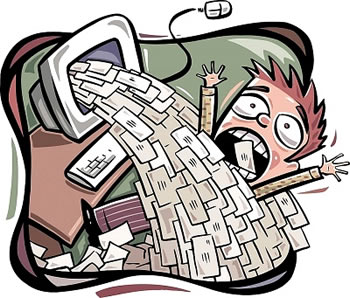Difference between Spam Mail and Junk Mail
Key Difference: The official differentiation between the two is that spam is unsolicited mail, whereas junk is solicited mail. This means is that spam is the mail that you haven’t asked for or given your information to receive, whereas, junk mail is sent to you because they have gotten your information from somewhere.
 We are all sick and tired of receiving mail that we didn’t ask for and which we don’t really need in the first place. However, that doesn’t stop companies from filling our mailboxes, both physical and digital with spam and junk mail. By the way, what is the difference between Spam Mail and Junk Mail?
We are all sick and tired of receiving mail that we didn’t ask for and which we don’t really need in the first place. However, that doesn’t stop companies from filling our mailboxes, both physical and digital with spam and junk mail. By the way, what is the difference between Spam Mail and Junk Mail?
Most of us use the term interchangeably. However, there is a difference between the two. An easy way to note the difference is to remember that your account has been spammed by junk mail.
It is a bit tricky to differentiate between Spam Mail and Junk Mail, primarily because to a layman they may actually seem like the same thing, and in fact they wouldn’t technically be wrong as they do serve the same purpose, which is to provide the receiver with information about offers and such, which the receiver may not need or want.
The official differentiation between the two is that spam is unsolicited mail, whereas junk is solicited mail. Now, what this means is that spam is the mail that you haven’t asked for or given your information to receive. Whereas, junk mail is sent to you because they have gotten your information from somewhere, such as from Facebook mailing lists, from another service you may have signed up for, or from your e-mail client itself.
Another difference is that spam is sent to whoever, wherever, which means that you’ll get an e-mail about cheap Viagra in US, despite of the fact that you are a female living outside of the USA. In comparison, junk mail is usually targeted to you specifically. They only send the mail to a group of people who fit a certain criteria, such as young females under the age of 20, living in New York and interested in Arts. This is often why many companies buy the mailing lists from other companies who share a similar audience. For example, a new art gallery will buy the mailing list of another reputed art gallery to mail them about their opening. You may be on the reputed art gallery’s mailing list, which is why you may get a mail about the opening of the new art gallery.
Now they sent out these mails about the opening to everybody. However, people may find it interesting, so they won’t consider it as junk, whereas many others would since they didn’t ask for that mail. Some may even call this spamming, however, that would be an incorrect usage of the term. Spamming means to stuff your inbox with unsolicited mail, which means that when you receive 20 mails about winning a lottery then that is considered as spamming. Just simple non-intrusive advertising is considered to be junk instead.

Mail clients such as Microsoft and Gmail have different approaches to dealing with spam and junk mail. If the mail is sent from an ill reputed IP address, one that has been known to send unsolicited e-mails, then that mail is considered as spam and is rejected by the server. However, if the e-mail passes the IP test, but its content is marked as junk by the mail clients’ content filters, then the mail is treated as Junk Mail and is sent to the Junk Folder. This is also often why at time mails for subscriptions you have actually signed up for also end up in the junk folder.
Another difference between the terms can be noted in the fact that junk usually refers to junk mail, either e-mail or less commonly now, physical mail. However, the term spam can refer to mail, text and instant messages, or social media posts and messages. For example, if someone keeps posting irrelevant messages or even emojis on your wall or sending it to you on Messenger.
However, both spam mail and junk mail can be annoying and irritating, as well as dangerous. Both types of mail run the chances of containing viruses, malware, or phishing software designed to steal your information and/o damage your computer. Yet in this context, junk mail is usually less dangerous than spam mail. While, email clients are always improving their systems to catch these malicious mails, the hackers are also always trying to evolve to beat the clients. In that respect, if the mail is suspicious, don’t open it, regardless of where it is spam mail or junk mail.
Comparison between Spam Mail and Junk Mail:
|
|
Spam Mail |
Junk Mail |
|
Descriptions |
Unsolicited Mail |
Solicited Mail |
|
Want |
Not wanted by anyone |
Might be useful for some, but annoying for others. |
|
Audience |
Sent out to everyone |
Sent out to some people, such as a specific mailing list |
|
Frequency |
Sent out frequently |
Sent out less frequently |
|
Intrusion |
Very intrusive and distracting |
Less intrusive by comparison. May or may not be distracting. May be helpful to some |
|
Malicious |
More likely to contain viruses, spyware, malware, and phishing software. |
Less likely, but still may contain viruses, spyware, malware, and phishing software. |
Reference: Microsoft, Dorian's World, Tech in Image Courtesy: cookedmedia.co.za, its.lshtm.ac.uk









Add new comment